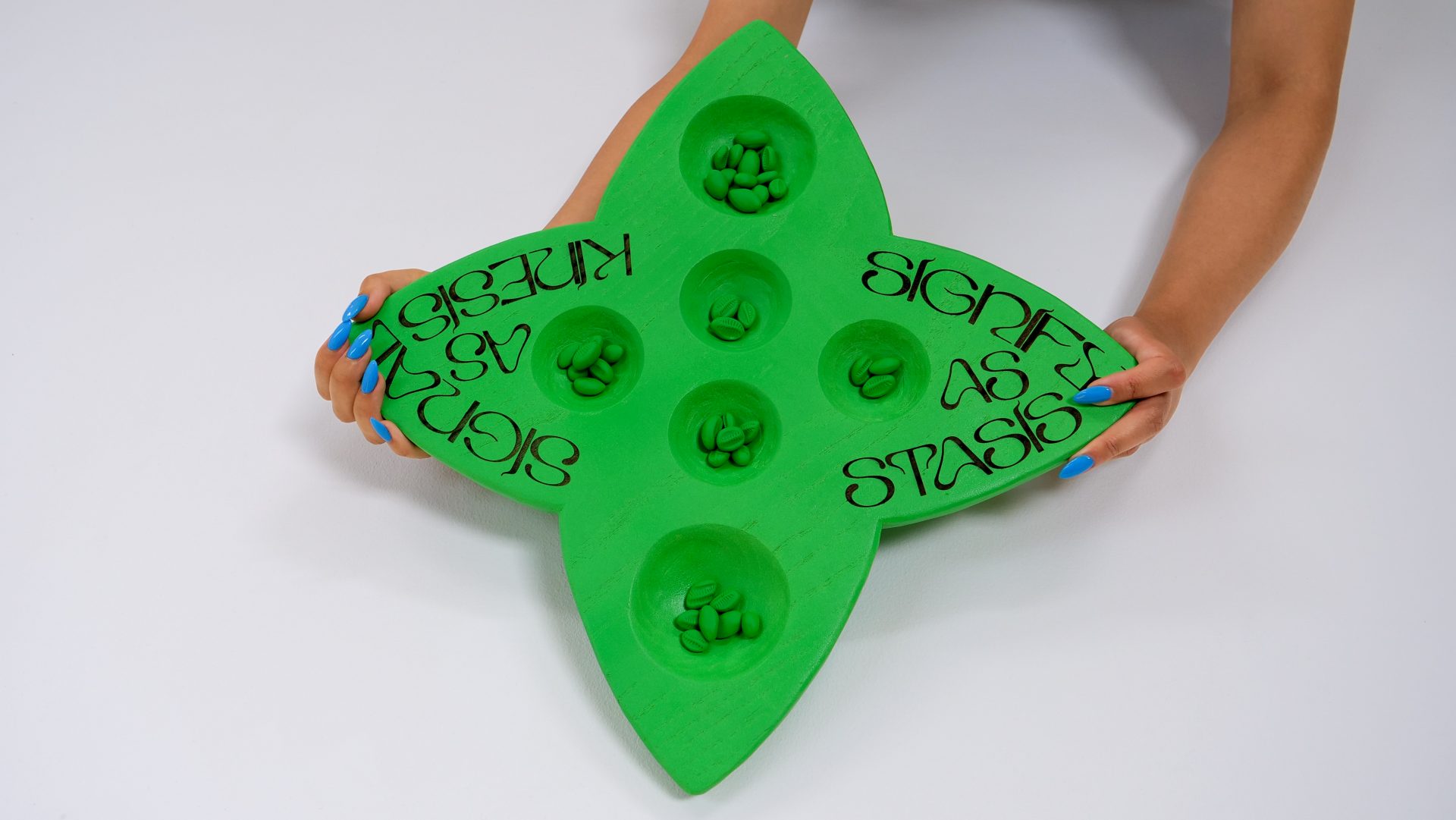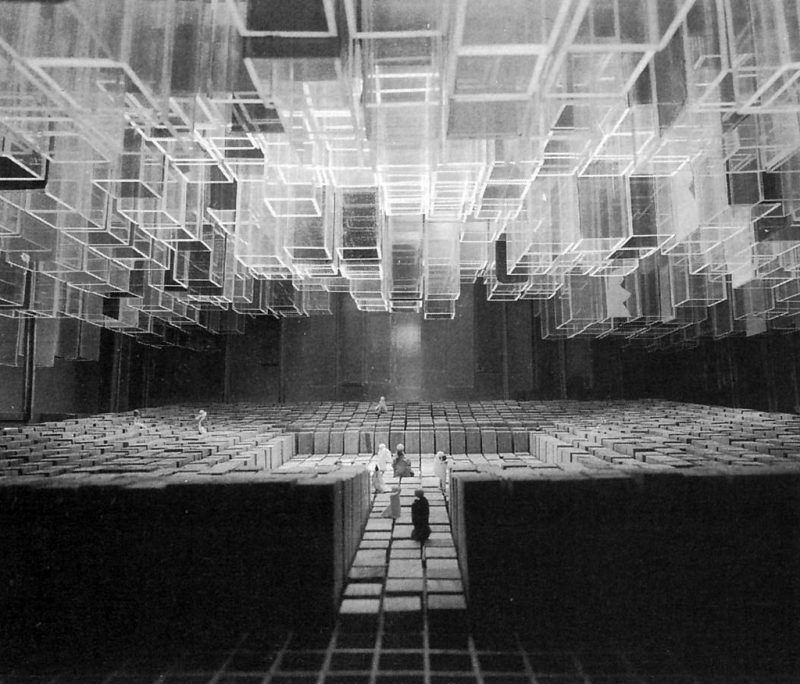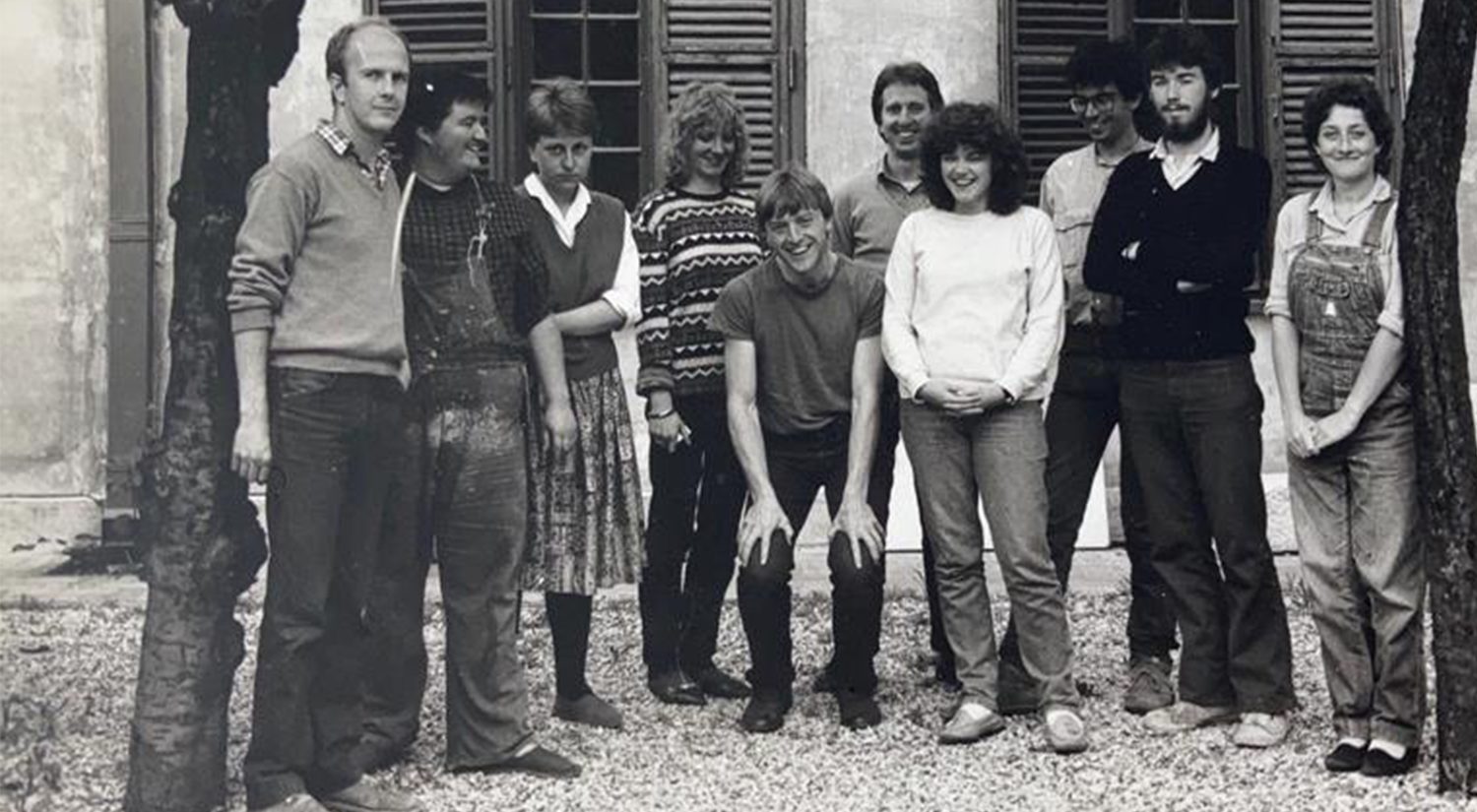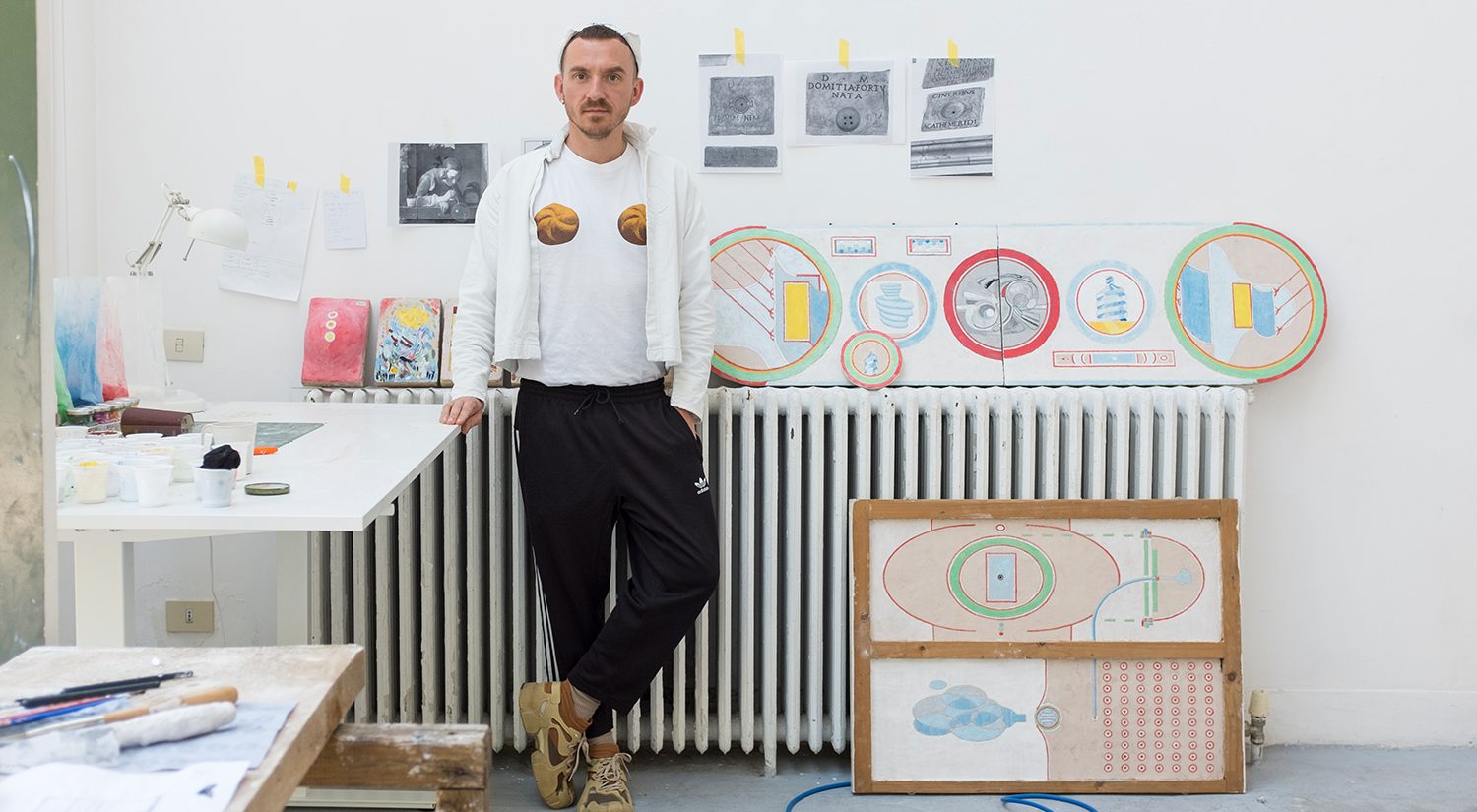An interview with Beau W Beakhouse and Sadia Pineda Hameed, Creative Wales–BSR Fellows, in which they speak about the workthey have produced during their residency at the BSR from September – November 2023, ahead of the Winter Open Studios.
One of your recent projects used a traditional Filipino game to explore the possibility of alternative forms of communication outside the colonial limits of language. Could you tell us more about this?
We create installations that combine sculptural objects, text, audio, film and performance, connected by processes of world-building. Our work continually returns to a triangle of ideas: the relationship between colonialism, labour and speculative fiction, and we consider how new or prototype tools might lead to collective and alternative modes of communication, knowledge and craft.
As a duo, conversation is central to our process and we often get asked about how we co-author or negotiate working together. We are interested in how, when working collaboratively, intimately, two people can enter a heightened and generative space together; where associations flow and ideas align almost telepathically. It is an intangible mode of communication, a ‘delirious discourse’, an unspoken or secret language. Reflecting on these processes inspires us, and our work looks to create spaces where this kind of communication can be entered into.

Over the last few years, one thread of our work has involved the creation of Taktak, based on the game Sungka, a two-person Filipino board game that involves rustic or ornate boards with a series of carved holes. The original game involves a tactile, ritualistic process of picking up, moving and planting ‘seeds’. Its undertones are competitive and apparently violent; burning down houses, stealing seeds and this dual awareness of settler-colonial violence alongside care, play and communication has been of ongoing interest to us. Our work considers the board as a method of communication, reconfiguring it through anti-colonial and anti-capitalist design principles to create sites of speculation and interpersonal dialogue. It considers the colonial legacies that reside in language and communication, but also in our relationship to the environment and ecology; botanical imperialism, plant hunting, arboretums and glasshouses, European collecting. Taktak holds these resonances and utilises the telepathy that players of a strategy game develop together, to create a series of three playable sculptural works that prioritise tactility, telepathy and intuition as inherently anti-colonial modes of communication.
During your time at the BSR you are tracing Rome’s relationship with speculative and Space Age design, exploring the works of pioneering Roman designers such as Maurizio Sacripanti. What have you found during your research at the MAXXI Archive?
Initially we were interested in researching design and architecture of the 1960s and 70s, to inform the creation of A Medium for All the Moments Outside of Time – an immersive installation of a near-future ‘communing booth’ inspired by Space Age conversation pits, modular seating and communal architecture. The work incorporates furniture design, projection mapping and soundwork to create and prototype a fictional technology and speculative social space for empathising across pasts and futures, based on the mechanics developed in Taktak. This work will be exhibited at g39, Cardiff at the beginning of 2024.

Starting with Maurizio Sacripanti’s unrealised design for the Cagliari Opera House ‘Theatre in Motion’, we spent time at the MAXXI and its library, and became interested in the unrealised and the unrealisable; architecture that was never (or could never) be built, or that used fiction as a tool for change. This included works in the New Domestic Landscape, an exhibition at the MOMA, New York, in 1972, showcasing Italian speculative design and architecture. This research began to contrast with our experiences of sites in Rome, particularly rationalist architecture in the EUR district, Foro Italico and the Olympic Village – architects working during and beyond the Fascist period that projected visions that align architecture, power, colonialism and memorialisation. During the residency we have been developing science-fiction texts, an anthology of short stories that holds much of this research and which will become a soundwork as part of A Medium for All the Moments Outside of Time.
Our research in Rome has also influenced the development of another work, two large steel engravings that will be exhibited at the Crypt Gallery, London, in February 2024 – for the culmination of the g39 Freelands Fellowship. These works, The Brightness of Metal and Metallic Thinking, depict mythologised scenes in the lives of two anti-colonial figures: José Rizal’s imprisonment at Montjuic Castle and Frantz Fanon’s hospitalisation in Rome. Taking inspiration from the capriccio and our time spent in the BSR archives looking at the work of Giovanni Battista Piranesi with Dr. Zoe Langer, as well as shared interests with research fellow Dr. Erica Bellia and her work on the Black Writers Congress in Rome, our engravings disrupt and layer geographies and histories as we explore the relationship between science fiction and myth-making as tools for memorialisation and resistance.












